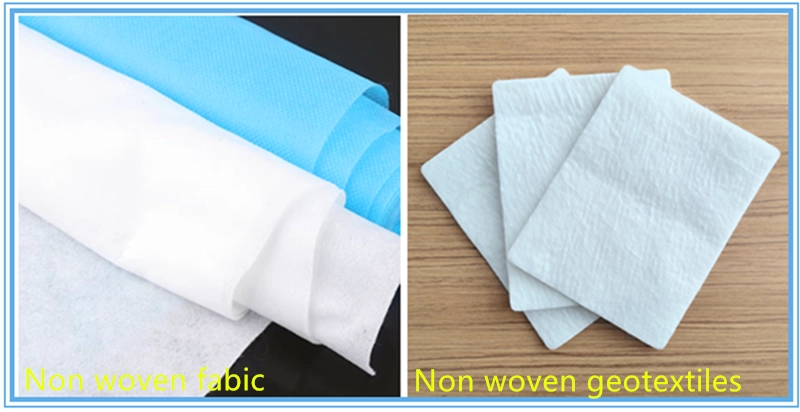
Non-woven geotextiles are specialized materials used for various purposes in civil engineering and construction projects. Unlike traditional woven fabrics, this geotextile is made through a mechanical or chemical process that bonds the fibers together rather than interweaving them through weaving. The fibers in nonwoven geotextiles are mechanically, thermally or chemically bonded to form a porous, flexible and durable fabric.
These fabrics can be used in civil engineering projects for filtration, separation, reinforcement, drainage and erosion control. Due to their permeability, strength and resistance to various environmental conditions, they are commonly used in road construction, drainage systems, landfills, environmental protection and erosion prevention.
1.Different definitions
(1) Geotextile: Geotextile, also known as geotextile, is a water-permeable geosynthetic material made of synthetic fibers through needle punching or weaving. Geotextile is one of the new geosynthetic materials. The finished product is in the form of cloth, with a general width of 4-6 meters and a length of 50-100 meters. Geotextiles are divided into woven geotextiles and non-woven filament geotextiles.
(2)Non-woven fabrics: Non-woven fabrics, also known as non-woven fabrics, are composed of directional or random fibers. They are a new generation of environmentally friendly materials that are moisture-proof, breathable, flexible, lightweight, non-combustible, easy to decompose, non-toxic and non-irritating. Sexy, rich colors, low price, recyclable and other characteristics. Fo
r example, polypropylene (PP material) pellets are often used as raw materials, and are produced by a continuous one-step process of high-temperature melting, spinning, laying, and hot-pressing coiling. It is called cloth because it has the appearance and certain properties of cloth.
(3)Non-woven geotextile: Non-woven geotextile is a special geotechnical material used for various purposes in civil engineering and construction projects. These fabrics can be used in civil engineering projects for filtration, separation, reinforcement, drainage and erosion control. Non-woven geotextiles mainly exist in contrast to woven geotextiles.
2. Geotextiles and non-woven fabrics have different uses
(1)Purpose of geotextile
Geotextiles are widely used in geotechnical projects such as water conservancy, electric power, mines, highways and railways. They can be used as filter materials for soil separation, drainage materials for reservoirs and mines, drainage materials for high-rise building foundations, and anti-erosion materials for river dams and slope protection. Materials: Reinforcing materials for railway, highway, and airport runway bases, reinforcing materials for road construction in swamp areas, anti-frost and anti-freeze insulation materials, and anti-cracking materials for asphalt pavements.
(2)Use of non-woven fabrics
A. Medical and sanitary non-woven fabrics: surgical gowns, protective clothing, disinfection wraps, masks, diapers, civilian rags, wipes, wet facial wipes, magic towels, soft towel rolls, beauty products, sanitary napkins, sanitary napkins Pads, disposable sanitary cloths, etc.
B. Non-woven fabrics for home decoration: wall coverings, tablecloths, sheets, bedspreads, etc.
C. Non-woven fabrics for clothing: linings, adhesive linings, wadding, styling cotton, various synthetic leather base fabrics, etc.
D. Industrial non-woven fabrics: base materials, reinforcing materials, polishing materials, filter materials, insulation materials, cement packaging bags, geotextiles, covering fabrics, etc. for roof waterproofing membranes and asphalt tiles.
E. Non-woven fabrics for agriculture: crop protection fabrics, seedling raising fabrics, irrigation fabrics, thermal insulation curtains, etc.
F. Other non-woven fabrics: space cotton, thermal insulation and sound insulation materials, linoleum-absorbing felt, cigarette filters, tea bags, shoe materials, etc.
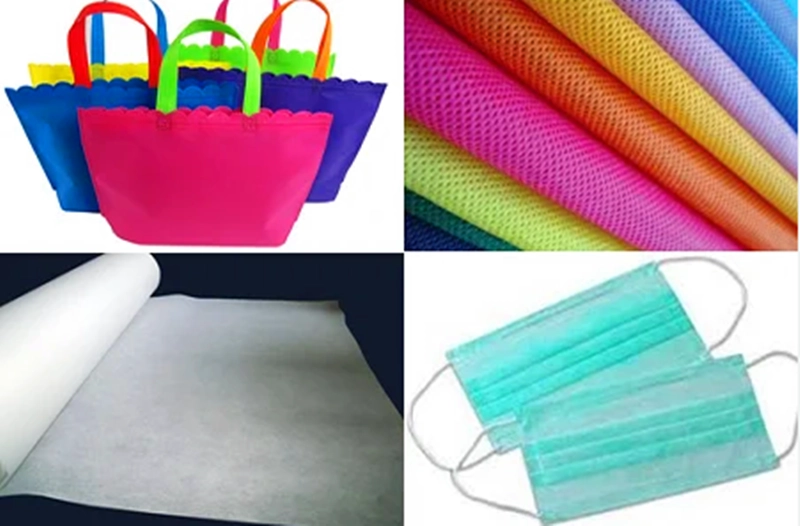
Some uses of non-woven fabrics
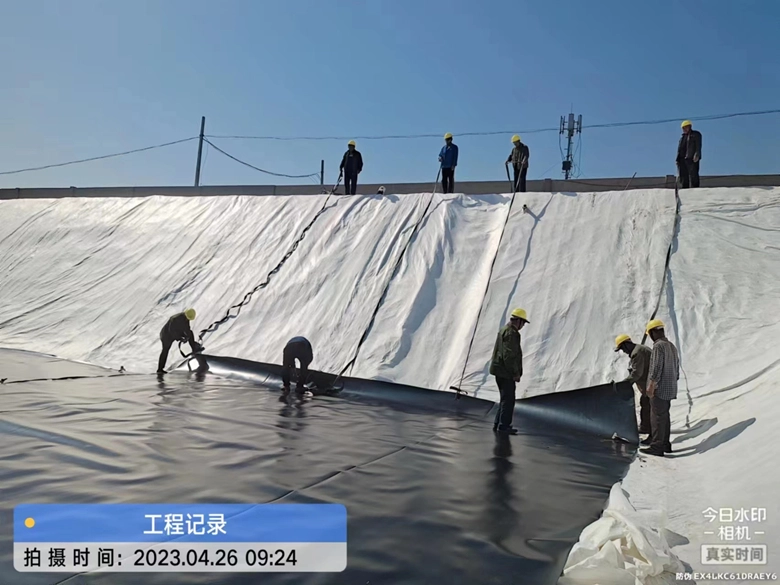
Some uses of non-woven geotextiles
3. The production processes of geotextiles and non-woven fabrics are different
(1)Geotextile production process
Short-filament geotextile is made of short-fiber polyester or polypropylene as raw material. It is unpacked by the unpacking machine, loosened by the unpacking machine, and then enters the storage box. It is then compacted by rollers, then four to five layers of mesh are laid, and then pre-pierced, The three-step needling process of barbs and main thorns is followed by stretching and trimming; while the filament geotextile is made of new polyester chip particles as raw materials, which are melted and plasticized at high temperature, punched into a mesh, and then pre-punched and compounded. It is made by two needling processes, and then the edges are cut and stretched.
(2) Non-woven fabric production process
Non-woven fabrics are not intertwined and knitted together by yarns one by one, but the fibers are directly bonded together through physical or chemical methods. It has no warp and weft lines. It is very convenient to cut and sew, and has high quality. Easily styled. There are three main production processes:
A. Spunbonding method: Using the principle of melt spinning, the raw materials are melted and mixed and extruded from the spinneret to form a thin stream of melt. High-speed quenched air is used to cool the thin stream and at the same time the fibers are stretched to form Continuous filaments are formed into a uniformly distributed monofilament structure through the splitting process, and are laid on the mesh curtain to form a fiber mesh. The fiber mesh is hot-rolled and reinforced, acupuncture reinforced or spun-entangled to form a non-woven fabric.
B. Melt blowing method: The melt extruded by the screw is blown with high-speed and high-temperature airflow, so that the melt stream is stretched at a higher rate to form ultra-fine short fibers, which are then accumulated on the coagulation curtain or web-forming drum. On the fiber, a continuous short fiber network is formed, which is then made into a non-woven fabric through self-adhesion or other reinforcement processes.
C. Composite method: Add a melt-blown non-woven fabric forming machine between two spun-bonded non-woven fabric forming machines to form a composite production line to produce spun-bonded fiber webs and melt-blown fiber webs stacked on top of each other layer of non-woven fabric.
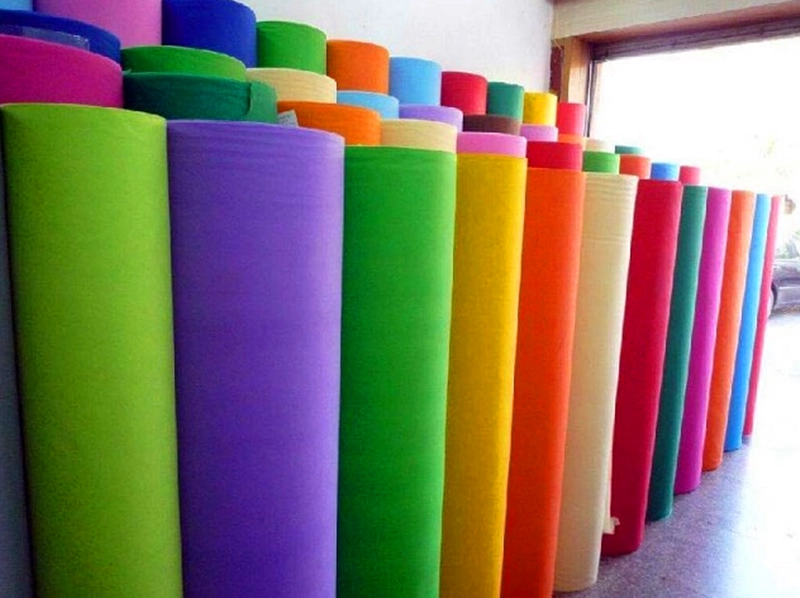
Display of non-woven fabrics in various colors
4. Classification of non-woven geotextiles
(1) Filament spunbond needle punched non-woven geotextile
(2)Short fiber needle-punched non-woven geotextile
For detailed introduction of both, please refer to the following product links of our company.
Filament non-woven waterproofing reinforced drainage geotextiles
Short fiber needled non-woven geotextile landfill liner design material
5. Advantages and disadvantages of non-woven geotextiles:
The advantages are:
(1) Breathability (2) Filtration (3) Insulation (4) Water absorption (5) Waterproofness (6) Stretchability (7) Not messy (8) Good feel , soft (9) light (10) elastic and recoverable (11) no directionality of cloth (12) higher productivity and faster production than textile cloth (13) low price, can be mass-produced, etc.
The disadvantages are:
(1) Compared with textile fabrics, it has poorer strength and durability;
(2) It cannot be washed like other fabrics;
(3) The fibers are arranged in a certain direction, so it is easy to split at right angles, etc. Therefore, recent improvements in production methods have been focused on improvements to prevent splitting.
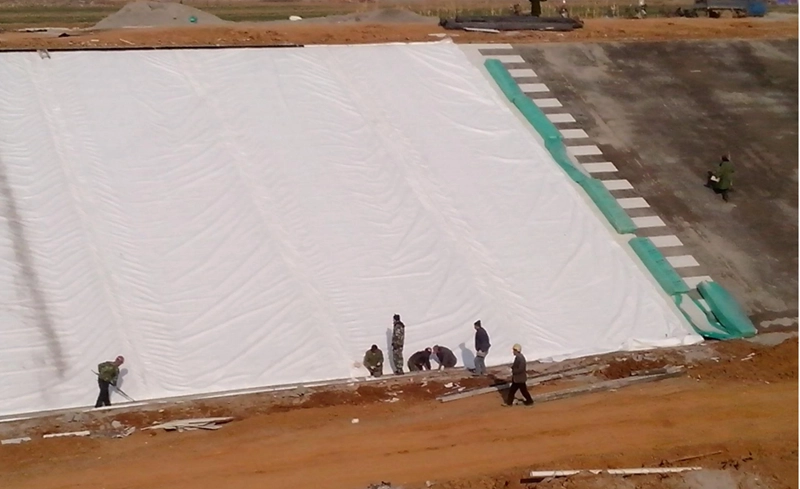
Application fields of non-woven geotextiles according to their advantages
6. Summary
Non-woven fabrics are a general term for non-woven fabrics. They are mostly made of polypropylene (PP material) pellets as raw materials and are produced through a continuous one-step process of high-temperature melting, spinning, laying, and hot-pressing coiling. Because they have the appearance of cloth and It is called cloth due to certain properties, and its application fields are extremely wide. Geotextile is an environmentally friendly geomaterial cloth mainly used in civil engineering. They are both types of cloth, but they have different differences in production materials, production processes and application fields.Non-woven geotextiles are a category of geotextiles, mainly referring to filament non-woven fabrics and short-fiber non-woven fabrics.
![]() 300g PET geotextiles test report.pdf
300g PET geotextiles test report.pdf
![]() 200g Staple fiber non-woven geotextile.pdf
200g Staple fiber non-woven geotextile.pdf
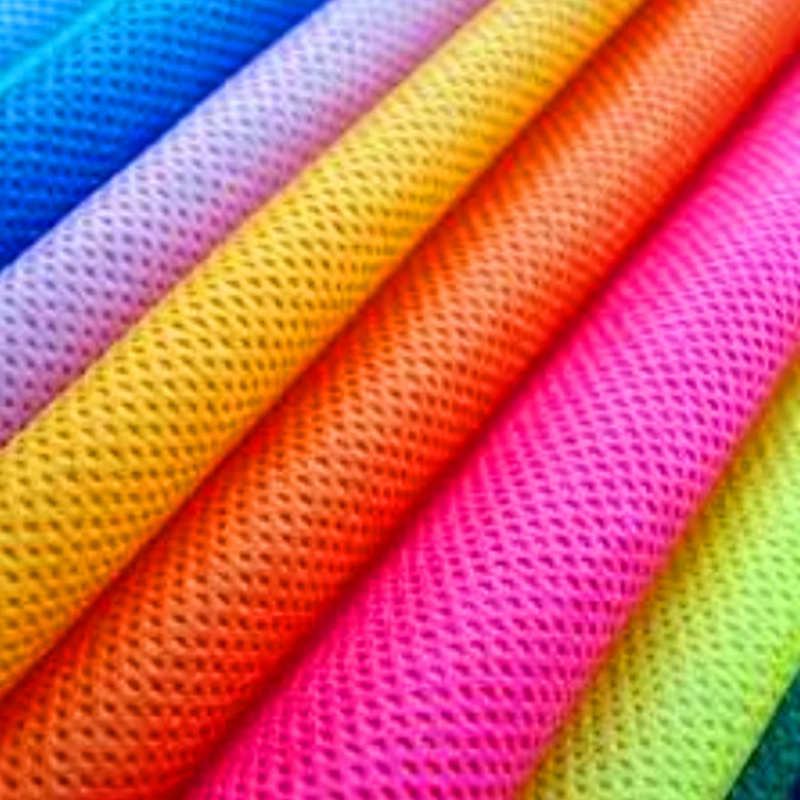
897.webp)
942.webp)
237.webp)